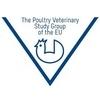Explore all the information on
Poultry vaccines
Disease prevention by vaccination is an integral part of flock health management protocols. Active immunization using live vaccines is the current industry standard. Routinely used vaccines in chickens include MDV, NDV, IBV, and IBDV, and in turkeys NDV and HEV. Newer vaccines, including molecular recombinants in which genes of immunogenic proteins from infectious agents are inserted into a live viral vector, are also being examined for commercial use. Efforts are under way to enhance vaccine efficacy by the use of adjuvants, particularly cytokines. The vaccine delivery systems include in ovo injection, aerosol, spray, drinking water, eye drop, and wing web injection. The in ovo vaccination procedure is relatively new and at the present time it is used primarily to vaccinate broiler chickens against MDV. Birds respond to vaccines by developing humoral and cellular immune responses. There are two main types of vaccine available for poultry: live or killed.
Hatchlings are highly susceptible to Salmonella with infection by a few organisms resulting in rapid colonization of the intestinal tract (7). Infection of young birds results in heavier shedding of salmonellae and a longer duration than occurs in older birds. Resistance to Salmonella infection increases with age with older birds requiring a higher level of salmonellae to become infected (6). It is for these reasons...
Comments : 5
Recommendations: 0
Historical background
So far, the use of mass vaccination as an option for the control of avian influenza (AI) in poultry was not applied in the field until1995. During the outbreak of HPAI H5N2 in 1994-1995, Mexico applied large-scale vaccination campaign using inactivated homologous H5N2 vaccines [18, 31]. Also, Pakistan used inactivated H7N1 vaccines to control HPAI H7N1 outbreaks in 1995 [37-39]....
Comments : 2
Recommendations: 0
New tests and vaccines are making it easier to detect viruses in chickens and protect them from the cancer-like diseases some of them cause. One of the latest tools developed by scientists at the Agricultural Research Service’s Avian Disease and Oncology Laboratory (ADOL) in East Lansing, Michigan, is a modified polymerase chain reaction (PCR) test to detect unique genetic sequences of both Marek’s disease and avian reticuloendotheliosis...
Comments : 0
Recommendations: 1
Zoetis today announced the availability in the UK and Ireland of the first specific vaccine against the QX strain of the infectious bronchitis virus — Poulvac ® IBQX
For the past two years the vaccine has only been available with a special import certificate from the Veterinary Medicines Directorate for use on flocks where the QX virus has been isolated. ...
Comments : 1
Recommendations: 0
Deepak Khosla, General Manager of Venky´s India, speaks about immunity of birds and about new solutions, line of products and a vaccination program for the broiler industry....
Comments : 0
Recommendations: 3
Following a successful first conference in 2012, the 2nd WVPA Asia Conference will be held in Bangkok, Thailand, on the 11-12th September 2014 and has as its theme ‘Testing & Monitoring’. The conference will also host the prestigious Asian Avian Pathology Lecture, which will be presented by Prof. Dr. Md. Rafiqui Islam from Bangladesh on the subject of infectious bursal disease.
The conference, which is well...
Comments : 0
Recommendations: 0
European biotechnology company Valneva SE (Valneva) announced today the approval and launch of a second veterinary vaccine produced in the EB66® cell line. The vaccine for the prevention of inclusion body hepatitis virus (IBH) was developed by Lima (Peru) based biopharmaceutical company FARVET SAC (FARVET), and will also be available for sale in Peru and several other South American countries.
...
Comments : 0
Recommendations: 0
The road from research to application and development can be long, but Dr. Eva Nagy is nearing a milestone in her work in veterinary virology as she works with Mexico-based vaccine company, Avimex Animal Health, on poultry vaccine development. There are no Canadian poultry vaccine manufacturers.
Nagy and...
Comments : 2
Recommendations: 0
The road from research to application and development can be long, but Dr. Eva Nagy is nearing a milestone in her work in veterinary virology as she works with Mexico-based vaccine company, Avimex Animal Health, on poultry vaccine development. There are no Canadian poultry vaccine manufacturers.
Nagy and her research team are using a strain of fowl adenovirus, FAdV-9, a strain that doesn’t cause disease in poultry, as a...
Comments : 0
Recommendations: 0
Dear all,
Recently some poultry vaccine manufacturers produce recombinant HVT-ILT vaccine to give protection against both MD and ILT. We are wondering about these issues: 1. Safety of this kind of vaccines 2. Some poultry producers are using ordinary MD vaccines (bivalent or trivalent), therefore does the use of recombinant vaccines give good protection instead of bivalent or trivalent ones? If no, what is the...
Comments : 2
Recommendations: 0
.jpg&w=3840&q=75)

Introducing Afla-V ONE: Fast, precise aflatoxin detection for complete feeds and pet foods
Suggested link
Newcastle Disease Virus, Infectious bronchitis virus (IBV), Avian metapneumovirus and other respiratory agents are, in spite of vaccination(s), major causes of respiratory problems in broilers and of poor egg production in breeders and layers in many parts of the world. Many vaccines that are being used have shown under experimental conditions that they are able to provide a high level of protection against an homologous challenge. This...
Comments : 1
Recommendations: 1
...
Comments : 0
Recommendations: 0
The Poultry CRC is supporting an 18 month research project aimed at the development of a live vaccine for the control of Mycoplasma gallisepticum (MG) related chronic respiratory disease in turkeys. The project being headed by Bioproperties R&D Manager, Dr Rima Youil, is a collaborative effort between The University of Melbourne and Bioproperties Pty Ltd. The research, titled Development of a temperature...
Comments : 0
Recommendations: 0
Protecting poultry against disease involves more than simply administering preventive vaccines. Disease prevention is a complex and multifaceted process. Vaccine quality is commonly blamed when a disease occurs; however, there are usually other factors responsible. A comprehensive investigation is often called for to identify the cause(s) and to resolve the problem.
Commercial poultry farms have continued to increase in size and more birds and farms...
Comments : 4
Recommendations: 1
Introduction
Avian coccidiosis is a common parasitic disease of broiler chickens caused by single protozoan parasite of the genus Eimeria that infect the intestinal tract and is transmitted among the birds via ingestion of infective oocysts during feeding. Coccidiosis cause a substantial economic cost to the poultry industry that is calculated on more that $800 million in annual losses (9). Losses are attributed to feed medication for...
Comments : 0
Recommendations: 0
Introduction Infectious Bronchitis consider one of the epidemic respiratory diseases over the world infected poultry in different stage of age, instead of its respiratory but can infected genital tract of female layer and parent breeder leading to produce bad eggs quality as well as decrease production level their target specially in mature birds leading to swelling of kidney, finally high mortality [1] ...
Comments : 9
Recommendations: 0
Introduction Infectious bursal disease, also known as Gumboro disease, has caused great economic losses in the poultry industry in different parts of the world due to mortality and immunosuppression. It is a contagious acute viral disease of young birds. The disease may be clinical with variable mortality, and subclinical without mortality. The clinical form of the disease occurs in birds from the third week of age and...
Comments : 9
Recommendations: 0
Dear all salam I'm veternarian from Iraq and work as assistant lecturer in agriculture college work on vaccination programm against IBD and IB diseases i need any new researchs about this topic if any one can help me with my regards. ...
Comments : 5
Recommendations: 0
Gumboro disease is one of the major diseases of chickens and is present in most of the chicken producing countries. Infection can seldom be avoided, mostly due to the high resistance of its causative agent in the environment, and vaccination is the only way to prevent the possibly heavy corresponding negative consequences. This video summarizes the key points to consider for the establishment of a sound vaccination program, including presentation of the types of vaccines and vaccination...
Comments : 5
Recommendations: 0
The Poultry Cooperative Research Centre (Poultry CRC) has been recognised for its collaborative efforts with industry and research partners in the development of a vaccine against fowl cholera, Vaxsafe® PM.
The award, for significant innovation in Agriculture and Food, was made at the Cooperative Research Centres Association (CRCA) Conference on May 16. As CEO of the CRCA, Professor Tony Peacock, explains "the Australian...
Comments : 1
Recommendations: 0













.jpg&w=3840&q=75)










